#islamic culture
Text
Abu al-Faraj al-Isfahani’s Kitab al-Aghani records the lives of a number of individuals including one named Tuways who lived during the last years of Muhammad and the reigns of the early Muslim dynasties. Tuways was mukhannathun: those who were born as men, but who presented as female. They are described by al-Isfahani as wearing bangles, decorating their hands with henna, and wearing feminine clothing. One mukhannathun, Hit, was even in the household of the Prophet Muhammad.
Tuways earned a reputation as a musician, performing for clients and even for Muslim rulers. When Yahya ibn al-Hakam was appointed as governor, Tuways joined in the celebration wearing ostentatious garb and cosmetics. When asked by the governor if he were Muslim Tuways affirmed his belief, proclaiming the declaration of faith and saying that he observes the fast of Ramadan and the five daily prayers. In other words, al-Isfahani, who recorded the life of a number of mukhannathun like Tuways, saw no contradiction between his gender expression and his Muslimness. From al-Isfahani we read of al-Dalal, ibn Surayj, and al-Gharid—all mukhannathun—who lived rich lives in early Muslim societies. Notably absent from al-Isfahani’s records is any state-sanctioned persecution. Instead, the mukhannathun are an accepted part of society.
...
Far from isolated cases, across Islamic history—from North Africa to South Asia—we see widespread acceptance of gender nonconforming and queer individuals.
- Later in the Ottoman Empire, there were the köçek who were men who wore women’s clothing and performed at festivals. Formally trained in dance and percussion instruments, the köçek were an important part of social functions. A similar practice was found in Egypt. The khawal were male dancers who presented as female, wearing dresses, make up, and henna. Like their Ottoman counterparts, they performed at social events.
- In South Asia, the hijra were and are third-sex individuals. The term is used for intersex people as well as transgender women. Hijra are attested to among the earliest Muslim societies of South Asia where, according to Nalini Iyer, they were often guardians of the household and even held office as advisors.
- In Iraq, the mustarjil are born female, but present as men. In Wilfred Thesiger’s The Marsh Arabs the guide, Amara explains, “A mustarjil is born a woman. She cannot help that; but she has the heart of a man, so she lives like a man.” When asked if the mustarjil are accepted, Amara replies “Certainly. We eat with her and she may sit in the mudhif.” Amara goes on to describe how mustarjil have sex with women.
...
Historian Indira Gesink analyzed 41 medical and juristic sources between the 8th and 18th centuries and discovered that the discourse of a “binary sex” was an anachronistic projection backwards. Gesink points out in one of the earliest lexicography by the 8th century al-Khalil ibn Ahmad that he suggests addressing a male-presenting intersex person as ya khunathu and a female-presenting intersex person as ya khanathi while addressing an effeminate man as ya khunathatu. This suggests a clear recognition of a spectrum of sex and gender expression and a desire to address someone respectfully based on how they presented.
Tolerance of gender ambiguity and non-conformity in Islamic cultures went hand-in-hand with broader acceptance of homoeroticism. Texts like Ali ibn Nasir al-Katib’s Jawami al-Ladhdha, Abu al-Faraj al-Isfahani’s Kitab al-Aghani, and the Tunisian, Ahmad al-Tifashi’s Nuz’ha al-‘Albab attest to the widespread acceptance of same-sex desire as natural. Homoeroticism is a common element in much of Persian and Arabic poetry where youthful males are often the object of desire. From Abu Nuwas to Rumi, from ibn Ammar to Amir Khusraw, some of the Islamic world’s greatest poets were composing verses for their male lovers. Queer love was openly vaunted by poets. One, Ibn Nasr, immortalizes the love between two Arab lesbians Hind al Nu’man and al-Zarqa by writing:
“Oh Hind, you are truer to your word than men.
Oh, the differences between your loyalty and theirs.”
...
Acceptance of same-sex desire and gender non-conformity was the hallmark of Islamic societies to such a degree that European travelers consistently remarked derisively on it. In the 19th century, Edward Lane wrote of the khawal:
“They are Muslims and natives of Egypt. As they personate women, their dances are exactly of the same description as those of the ghawazee; and are, in like manner, accompanied by the sound of castanets.”
A similarly scandalized CS Sonnini writes of Muslim homoerotic culture:
“The inconceivable appetite which dishonored the Greeks and the Persians of antiquity, constitute the delight, or to use a juster term, the infamy of the Egyptians. It is not for women that their ditties are composed: it is not on them that tender caresses are lavished; far different objects inflame them.”
In his travels in the 19th century, James Silk Buckingham encounters an Afghan dervish shedding tears for parting with his male lover. The dervish, Ismael, is astonished to find how rare same-sex love was in Europe. Buckingham reports the deep love between Ismael and his lover quoting, “though they were still two bodies, they became one soul.”
...
Today, vocal Muslim critics of LGBTQ+ rights often accuse gay and queer people of imposing a “Western” concept or forcing Islam to adjust to “Western values” failing to grasp the irony of the claim: the shift in the 19th and 20th century was precisely an alignment with colonial values over older Islamic ones, all of which led to legal criminalization. In fact, the common feature among nations with anti-LGBTQ+ legislation isn’t Islam, but rather colonial law.
Don't talk to me I'm weeping. I'm not Muslim, but the grief of colonization runs in the blood of every Global South person. Dicovering these is like finding our lost treasures among plundered ruins.
Queer folk have always, always been here; we have always been inextricable, shining golden threads in the tapestry of human history. To erase and condemn us is to continue using the scalpel of colonizers in the mutilation and betrayal of our own heritage.
#islam#queer muslims#queer history#lgbt history#colonization#colonialism#imperialism#world history#trans positivity#gay positivity#intersex positivity#queer poetry#queer love#queer art#islamic culture#lgbtqia#islamic history#global south#pinkwashing#islamphobia#colonial violence#queer erasure#arab culture#ottoman empire#hijra#wlw#mlm#knee of huss#same sex love#egyptian culture
619 notes
·
View notes
Text

Khadim Ali — Birth of Demons V (gouache & gold leaf, on handmade paper, 2024)
60 notes
·
View notes
Text
Today I learned (from a Jacob Geller video, but here's an article, too) that Al Qaida went on a rampage committing arson, destroying ancient scrolls and manuscripts (specifically in Mali). A librarian who was preserving a collection of PRICELESS manuscripts in Timbuktu knew that Al Qaida would be coming to their library sooner or later, so over the course of six months with the help of several volunteers, they would transport around 200,000 books.
(Some of the documents & books in the library didn't make it out/were destroyed around January 2013) In the beginning they drove 600 mile (checkpoint filled) round trip again and again to each house that has volunteered to put their life on the line to save the books.
Eventually, that method became impossible, and he discovered he (and the other volunteers) only have one choice: FLOATING THE REST OF THE BOOKS DOWN THE NIGER RIVER. BOOKS. DOWN A RIVER. Seven Hundred Ninety One (791) TRUNKS/"footlockers" of BOOKS were sent down a river. You want to know how many made it? How many were recovered? ALL SEVEN HUNDRED NINETY ONE TRUNKS WORTH.
These books are literal relics. "Some date back to the 13th Century, and have survived more than 700 years." Bro, you are awesome, but you are going to give me a heart attack. Anyway, this some wild history and the art in these manuscripts is beautiful.

#Mali#Timbuktu#history#world history#african history#al qaeda#books#manuscripts#documents#islamic culture#art#tumblr history#west africa#jacob geller#video essay#article#recent history#calligraphy#african languages#13th century#ancient history#ancient art
107 notes
·
View notes
Photo
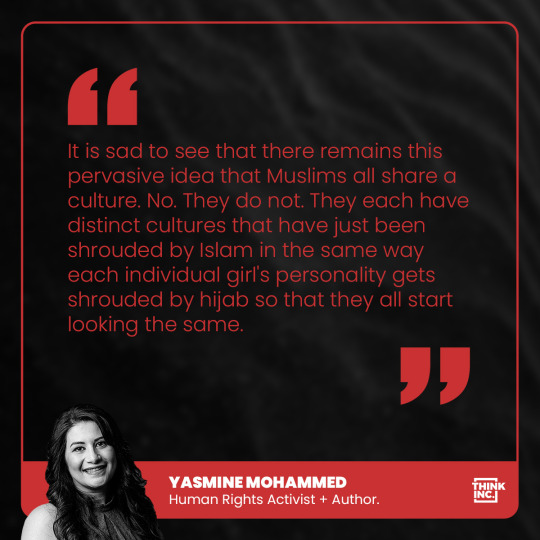
“It is sad to see that there remains this pervasive idea that Muslims all share a culture. No. They do not. They each have distinct cultures that have just been shrouded by Islam in the same way each individual girl's personality gets shrouded by hijab so that they all start looking the same.”
-- Yasmine Mohammed
#Yasmine Mohammed#islam#culture#islamic supremacy#religion#islamic culture#religion is a mental illness
60 notes
·
View notes
Photo

Dar Si Said, Marrakesh, 2012
#picofthenight#travel#morocco#maroc#original photographers#photographers on tumblr#interior photography#museum#islamic architecture#islamic culture#streetphoto color#decorated walls#photoofthenight
76 notes
·
View notes
Photo



(via Embodying Sufism: The Spiritual Culture of Third Gender (Khwaja Sira) Communities in Pakistan | South Asia@LSE)
Emphasising the mismatch between their visible bodies (HAZIR) and the invisible soul (RUH), they presented the khwaja sira as a feminine soul that was stuck in a masculine body. Sufism may be best described as Islamic mysticism or asceticism, which through belief and practice helps Muslims attain nearness to Allah by way of direct personal experience of God. A dominant position in these debates characterized khwaja siras as a biological category and following this characterization, the state institutions mandated with certifying their citizenship demanded medical examinations as proof of their third gender. One response to this discourse was to highlight its inherent discrimination, but some khwaja siras took an entirely different line of reasoning – they shifted the terrain of this debate to their soul.
9 notes
·
View notes
Text
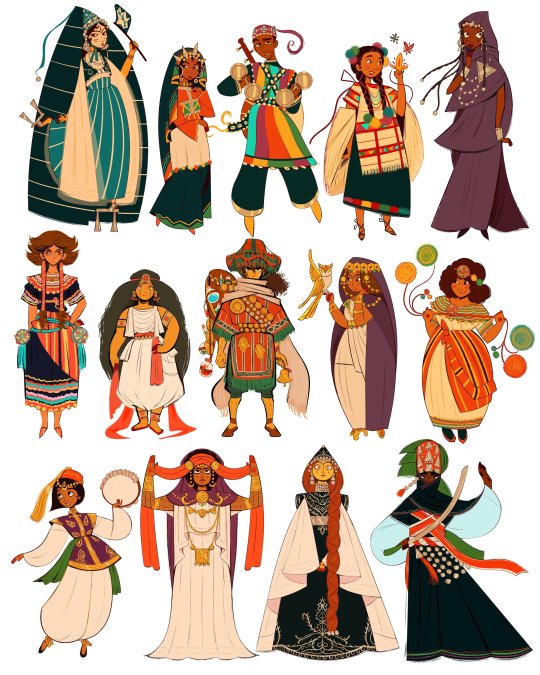
"the whole gang's here"
Safiya Zerrougui
#Amazigh#folk costume#illustration#art#Islamic culture#African culture#North Africa#character design
30 notes
·
View notes
Text
Even the advanced state of medieval Islamic culture suffered
The gods of the ancient civilizations were typically capricious and illogical, as evidenced in their supposed interactions with humanity and the world. According to ancient beliefs, the physical state of the world was left to the unpredictable and unreliable will of the gods (a sort of ancient form of relativism). Science could not take root in a world without order and regularity. Even the advanced state of medieval Islamic culture suffered from belief in the arbitrary nature attributed to the Muslim deity, Allah. ~ Samples, Kenneth Richard. ‘Without a Doubt: Answering the 20 Toughest Faith Questions.; p. 190
3 notes
·
View notes
Photo

Stealing From The Saracens: How Islamic Architecture Shaped Europe
#islam#moorish#gothic#art#history#architecture#castles#cathedrals#mosques#colleges#islamic culture#dark ages#medieval europe#books
35 notes
·
View notes
Text
The more I learn about “benevolent misogyny” the more I realise how much gaslighting Muslim women have been exposed to, indoctrinated to believe everything Muslim men do is actually in benefit for them.
#remember the whole women are feeble creatures#so that’s why you need two female witnesses for every one male#or a woman spreads dawat in her house#she doesn’t need to study islam#because that’s too much for her fragile constitution#look how feminist is men are!#Islam#sexism#Islamic culture#Muslim women#benevolent misogyny
4 notes
·
View notes
Text
"Paseo por Tanger" by Francisco Soria Aedo, 1898-1965
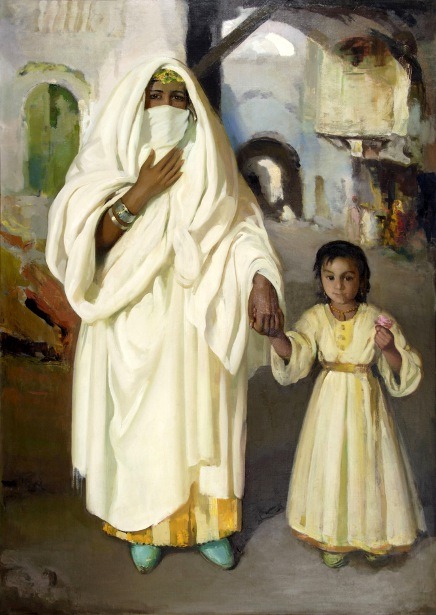
Lady dressed in the traditional Haik, a type of outdoors Veil of North Africa and Traditionally fabricated in Fez, Morocco.
The Haik is one of great Moroccan outfit.
#Morocco#Arab World#Al Maghrib#Al Jazeera#Moroccan Culture#Haik#Moroccan#Moorish#Islamic#Islamic Culture#Muslim#Muslim World#Moroccan Traditional Outfit#Moroccan Pattern#Islamic Painting#Islamic Art#Medieval Painting#Medieval Art#North Africa#Algeria#Architecture#Palestine#Turkey#Syria#Aesthetic#traditional art#art inspiration#fes#tangier#tanger
13 notes
·
View notes
Text
Every time I see Rumi's poems in English it breaks my heart because they're always from The Essential Rumi by Coleman Barks, a huckster who doesn't even know Persian and mistranslated and erased Islam from them. The West cannot touch anything without warping it beyond recognition and then hawking it all over the globe to line their own pockets.
I know the translations by AJ Arberry and William Chittock are considered a lot more faithful, but I really want to read one by a scholar from Iran or at least the Middle East. I'm so tired of having to talk to communicate with other Global South cultures through the West.
#colonization#orientalism#islamic poetry#islamic culture#iran#persian literature#cultural appropriation#white supremacy#english literature#rumi#poetry#decolonisation#racism#islamophobia#knee of huss
21 notes
·
View notes
Text
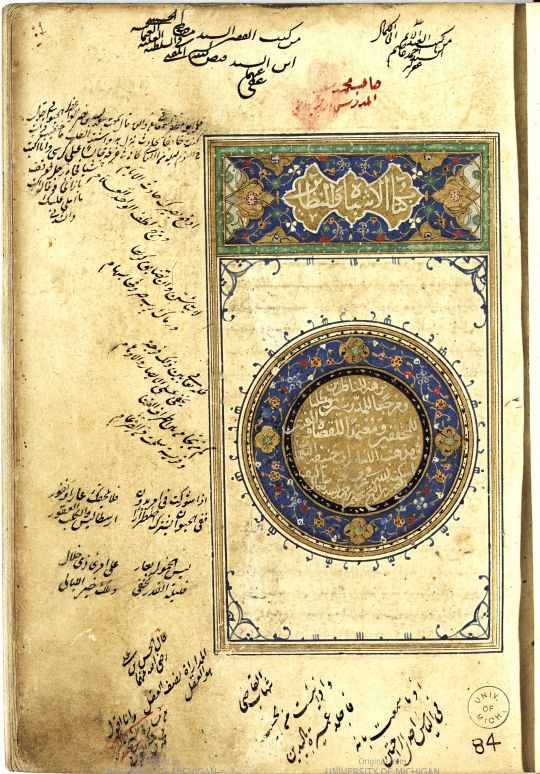
Illuminated titlepiece surrounded by notes (poetic excerpts and ownership statements) in Isl. Ms. 84, a copy of Kitāb al-Ashbāh wa-al-naẓāʼir (كتاب الاشباه والنظائر), Ibn Nujaym's (d.1563) treatise on Ḥanafī law
Description & images of entire manuscript openly available online!
#illumination#illuminated manuscripts#manuscript illumination#medieval manuscripts#Islamic Manuscripts#manuscripts#manuscript culture#ottoman culture#ottoman arts#ottoman manuscripts#turkish culture#turkish arts#turkish history#ottoman history#islamic history#islamic law#islamic culture#islamic arts#arabic manuscripts#yazmalar#el yazma#yazma eserler#المخطوطات العربية#المخطوطات#التراث المخطوط#التراث#المكتبات#libraries#archives#special collections
47 notes
·
View notes
Link
#Handmade Turkish Zirconia#Turkish Zirconia#sunnah#ring for men#zirconia#men sunnah#islam#islamic cul#islamic culture
8 notes
·
View notes
Photo
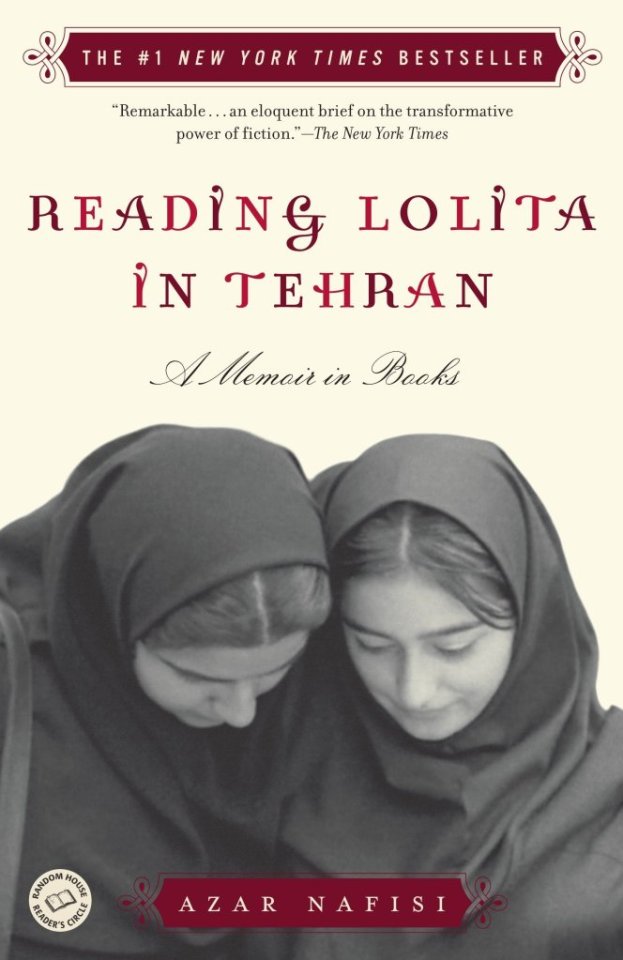
(via Reading Lolita in Tehran by Azar Nafisi)
The author, Azar Nafisi, and several of her girl students who formed the clandestine book discussion group to explore some of the forbidden classics in the Revolutionary Islamic Iran were relating themselves to Lolita where there was a Humbert in their lives in one form or another, restricting the freedom of their lives in some way and taking control over them in a manner that was loathed by them all.
The Humbert could take any form, from the uncle of one of the girls who tried to molest her in her childhood to the ‘Philosopher-King’ Ayatollah himself who, according to the author, endeavoured to build his dream kingdom by imposing the most stringent regulations and restricting the freedom of the subjects, particularly women. In a country ravaged by the so-called revolution and warfare with the neighbouring country, the sole means these women could find to live the lives of their dreams was to turn to fiction, because they believed that their lives of freedom could exist only in their minds, in the realm of imagination.
This book Reading Lolita in Tehran endeavours to speak to us about the power of imagination and fiction. As the group of women crazy for fiction delves into the fictional classics by Nabokov, Fitzgerald, Austen, and James, we realize how their true lives are intertwined with the narratives they discuss. The book is part memoir and part literary crit...
(Read full text on booksperience.org)
#books#reading#ayatollah#azar nafisi#book club#book discussion#criticism#fiction#f. scott fitzgerald#henry james#humbert#iranian literature#islamic culture#islamic republic of iran#jane austen#khomeini#literary#lolita#memoir#vladimir nabokov#non-fiction#persia#persian literature#reading lolita in tehran#tehran#women#booksperience
1 note
·
View note
Photo

Holiday - Nizwa, 2019
#picofthenight#travel#oman#original photographers#photographers on tumblr#street photography#night photography#religion#islam#islamic culture#streetphoto color#photoofthenight
28 notes
·
View notes